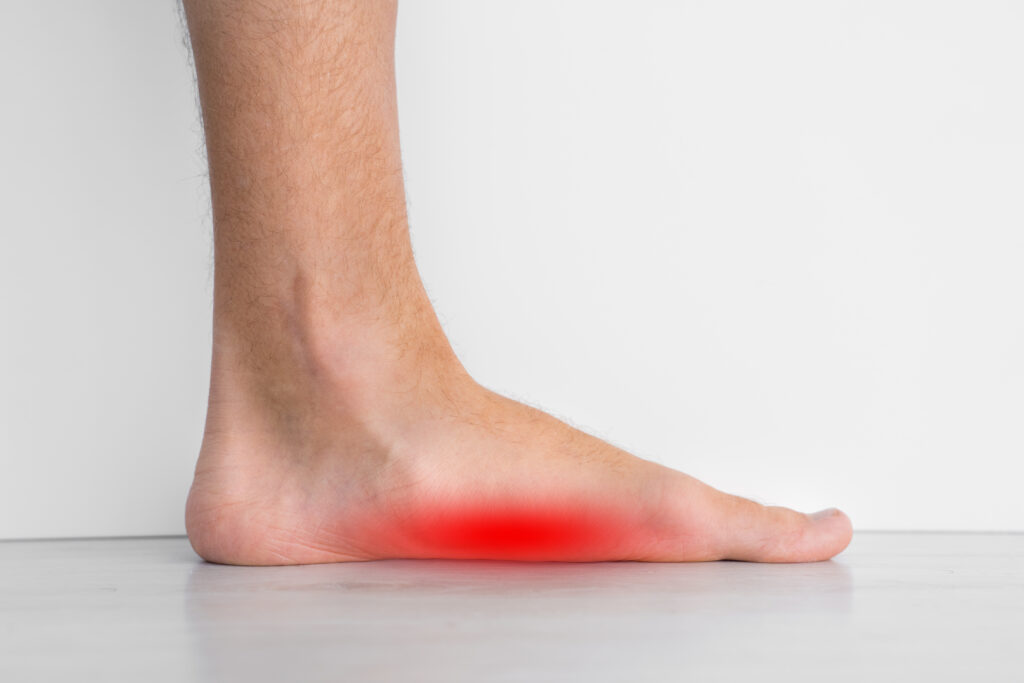One of the most common sources of foot and ankle pain is flat foot deformity.
This often results from a failure of the foot and ankle tendon, known as the posterior tibial tendon. The role of this tendon is to suspend the arch of the foot, and when this tendon becomes diseased or fails to perform its function, this results in a progressive flattening of the arch of the foot. There are other contributing factors, such as age, ligamentous laxity, genetics, and obesity. Patients will often experience dull, aching pain in the foot’s arch at the end of the day or after sustained physical activity. If this issue is not addressed, it can progress and cause further flattening of the arch and increased pain.

The diagnosis of flat feet is done by careful examination, including gait analysis. X-rays also help in the workup and provide us with a picture of the bony alignment of the arch. If there is a concern for other associated pathologies, such as tendon injury or ligament damage, then an MRI may be warranted.
Luckily, there are multiple treatment options for this common condition. If it is detected early, immobilization with a walking boot can help take the stress off the tendon and allow it to heel. Non-steroidal anti-inflammatory drugs (NSAIDs) can help manage the pain and decrease the inflammation around the diseased tendon. However, the most effective conservative treatment option is custom-molded foot orthotics. These devices are specifically tailored to the patient’s foot to help elevate the foot’s arch and prevent it from collapsing. This takes stress off of the tendon and repositions the foot into its natural position. Surgical management may be considered if an individual does not respond adequately to conservative treatment options.
Flat foot surgery aims to reconstruct the foot arch by repositioning the hindfoot’s bones into a higher-arched position. The type of surgery that is performed is patient-specific. The surgeon will consider the severity of the deformity, the presence of arthritis, and the patient’s overall goals. If you or a loved one suffer from a painful flat foot deformity, please do not hesitate to make an appointment at one of our offices. The doctors of Advanced Foot Care are skilled clinicians and surgeons with years of experience managing painful flat feet.





